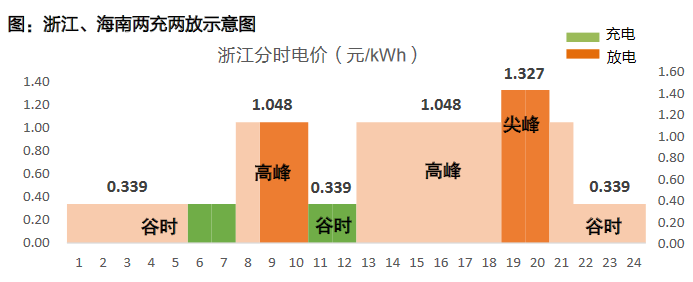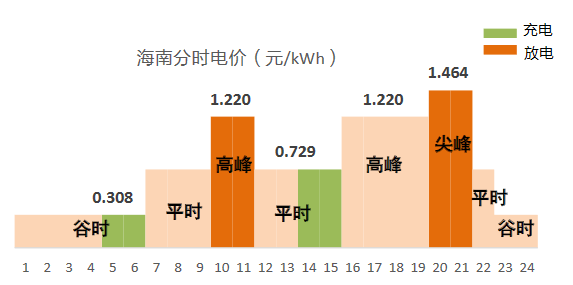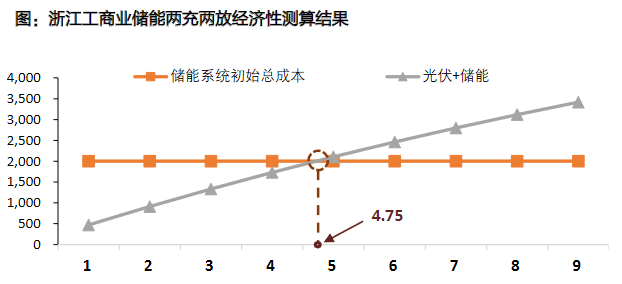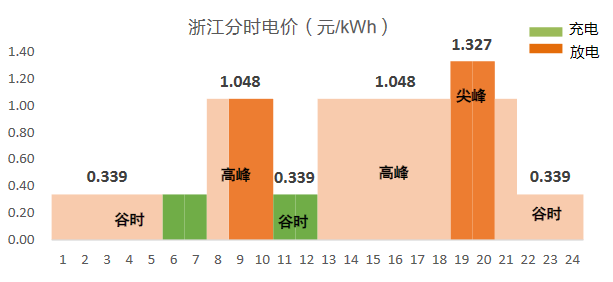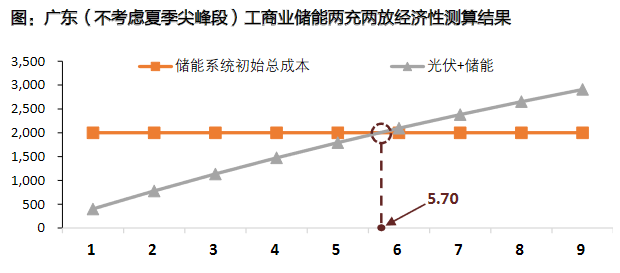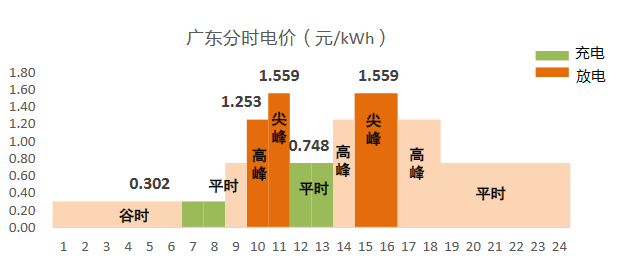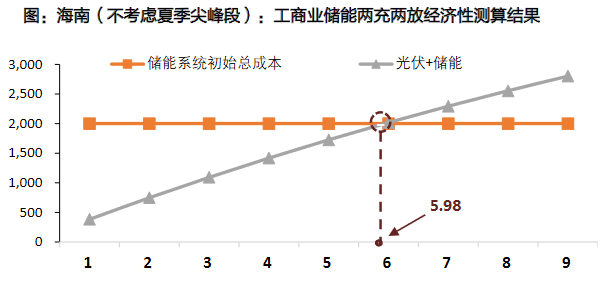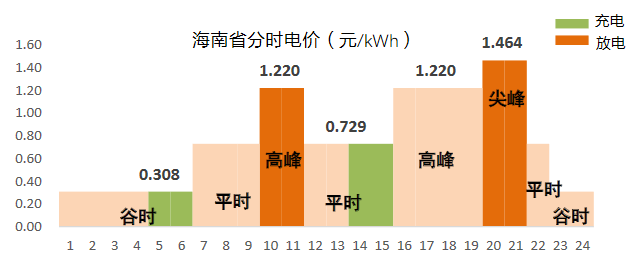| Zhejiang Province's industrial and commercial energy storage will receive a 4.75 |
| Release time:2023-03-22 08:40:25| Viewed: |
Since last year, there have been significant positive news about energy storage. The National Development and Reform Commission has stated that it is necessary to vigorously develop new energy storage power stations. Various provinces have requested mandatory allocation and storage of new energy and granted subsidies to energy storage power stations, reducing energy storage costs. Then, the time-of-use electricity price policy was issued to further widen the peak valley price difference and expand the peak valley arbitrage space for energy storage power stations.
01 Industrial and commercial energy storage or dual charging and discharging
Under the current time-of-use electricity pricing mechanism, multiple provinces and cities can meet the requirements of charging and discharging industrial and commercial energy storage twice a day.
When there are two peak periods, industrial and commercial energy storage systems can be used to charge during valley hours/peacetime, and discharge during the two peak periods respectively, achieving two charges and two discharges per day, thereby improving the utilization rate of the energy storage system and shortening the cost recovery cycle.
On the basis of meeting the requirements of two charges and two discharges per day, we also found that the economy of installing industrial and commercial energy storage in provinces such as Zhejiang and Hainan is expected to further increase when the time-of-use electricity prices are set at peak or two valleys.
Typical examples include Zhejiang and Hainan, where some provinces and cities have peak segments, which can further expand the benefits of single peak valley price spread arbitrage and shorten the cost recovery cycle by using larger peak valley price differentials. For example, Zhejiang has a peak period of 19:00 to 21:00 every day throughout the year, while Hubei has a peak period of 20:00 to 22:00 every day throughout the year. Provinces such as Guangdong and Hainan have also set up peak periods quarterly.
02 Economic Calculation of Energy Storage, Charging, and Discharging in Industrial and Commercial Industries (Taking Zhejiang, Guangdong, and Hainan as Examples)
Core assumptions: When calculating the economic benefits of the "two charging and two discharging" strategy for energy storage in the industry and commerce, we assume that the energy storage capacity is 1kWh and the cycle life is 6000 times; The annual operating days are 330 days, and the system is fully charged and discharged twice a day. The DoD is 90%, corresponding to the life of the energy storage system of 9.1 years (that is, when the current cycle is less than the system life, it can be considered profitable); The unit price of the energy storage system is 2 yuan/kWh, the operation and maintenance rate is 1% of the investment cost per year, and the depreciation rate is 3.25%.
In addition, due to the fact that the amount of photovoltaic power generated on industrial and commercial rooftops is often much lower than the daily electricity load, there is no scenario where photovoltaic power is used to charge energy storage, and the allocation of storage can only be used for peak valley arbitrage. (Note: This model only considers the economy of domestic industrial and commercial allocation and storage under peak valley arbitrage mode.)
Specific strategy for two charging and two discharging: Take Zhejiang as an example. Daily peak periods include 8:00 to 11:00 and 13:00 to 19:00, and peak periods include 19:00 to 21:00. If equipped with a 2h energy storage system, it is possible to charge at the first peak period (6:00 to 8:00), discharge at the first peak period (8:00 to 11:00) for two hours, charge at the second peak period (11:00 to 13:00), and discharge at the peak period (19:00 to 21:00). Using the energy storage system, two charging and discharging cycles can be realized every day.
Calculation steps:
Guangdong Province: Regardless of the peak period in summer, the two charges are at valley time and peacetime, and the two discharges are at two peak periods. The average peak-valley price difference is 0.73 yuan/kWh. The measured investment recovery period is about 5.70 years.
03 Industrial and commercial energy storage is more economical than large energy storage in places with large peak valley price differences
According to estimates, the recovery cycle of energy storage investment in Zhejiang, Guangdong, and Hainan provinces is within 6 years. In provinces and cities that can achieve two charging and two discharging, the peak valley price difference across the country continues to increase, and the economy of energy storage in industrial and commercial industries is considerable.
According to the calculation results, the recycling cycles of the above three places are ranked as follows: 4.75 years in Zhejiang Province, 5.70 years in Guangdong Province, and 5.98 years in Hainan Province. Zhejiang Province has two 2-hour valley hours, and there are 2-hour peak periods throughout the year. Allocation and storage can fully utilize the peak valley price difference, with an average peak valley price difference of 0.85 yuan/kWh.
Looking ahead, in the context of the sustained growth of renewable energy, maintaining the stability of the power grid will continue the trend of widening the peak valley price gap, and the peak valley period setting will be staggered from the peak period of new energy power generation. We believe that although not all industrial and commercial energy storage systems are economically viable across the country at present, it is expected that the number of provinces suitable for investment in industrial and commercial energy storage systems at the national level is expected to gradually increase under the trend of increasing peak valley price differences+peak valley time settings suitable for energy storage development.
With the implementation of favorable policies and the progress of energy storage technology, energy storage in the future will surely fly into the homes of ordinary people like photovoltaic, ushering in strong development!
Disclaimer: If the videos, pictures and text used in this article involve copyright issues, please inform us at the first time, and we will immediately delete them without any commercial use! |



